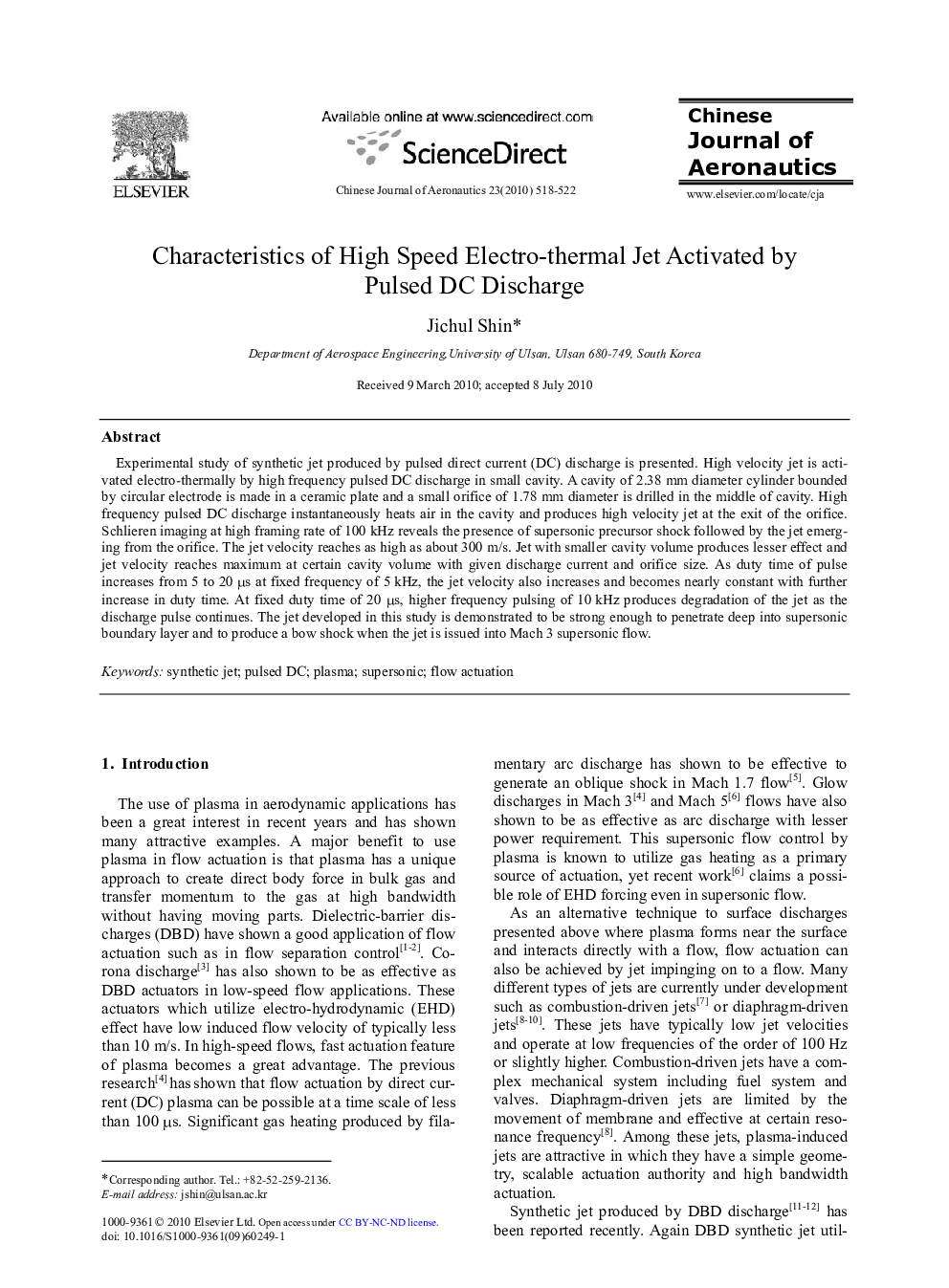| Article ID | Journal | Published Year | Pages | File Type |
|---|---|---|---|---|
| 757429 | Chinese Journal of Aeronautics | 2010 | 5 Pages |
Experimental study of synthetic jet produced by pulsed direct current (DC) discharge is presented. High velocity jet is activated electro-thermally by high frequency pulsed DC discharge in small cavity. A cavity of 2.38 mm diameter cylinder bounded by circular electrode is made in a ceramic plate and a small orifice of 1.78 mm diameter is drilled in the middle of cavity. High frequency pulsed DC discharge instantaneously heats air in the cavity and produces high velocity jet at the exit of the orifice. Schlieren imaging at high framing rate of 100 kHz reveals the presence of supersonic precursor shock followed by the jet emerging from the orifice. The jet velocity reaches as high as about 300 m/s. Jet with smaller cavity volume produces lesser effect and jet velocity reaches maximum at certain cavity volume with given discharge current and orifice size. As duty time of pulse increases from 5 to 20 μs at fixed frequency of 5 kHz, the jet velocity also increases and becomes nearly constant with further increase in duty time. At fixed duty time of 20 μs, higher frequency pulsing of 10 kHz produces degradation of the jet as the discharge pulse continues. The jet developed in this study is demonstrated to be strong enough to penetrate deep into supersonic boundary layer and to produce a bow shock when the jet is issued into Mach 3 supersonic flow.
